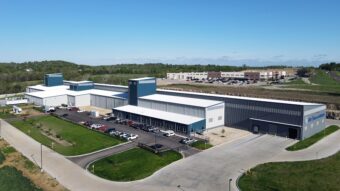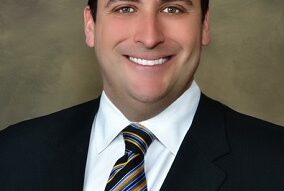How do big companies such as CVS, Walmart and Amazon find the perfect locations for their distribution centers? And how do they most effectively reach those customers clustered in dense urban areas, parts of the country that don't seem to have room for nearby distribution centers?
These are the big questions addressed last month when more than 500 people attended KC SmartPort's "Big Freight" industrial forum in Kansas City. The event largely focused on how distribution companies identify new locations for their facilities.
Making that decision isn't easy, of course. Companies must include everything from the cost of labor to how expensive land is to how pro-business a state and municipal government might be.
Jim Della Valle, senior director for supply chain transformation and outbound transportation for CVS Pharmacy, provided plenty of insight into what companies consider before opening new distribution facilities in a particular market. CVS in 2018 will open a $110 million, 762,000-square-foot distribution center near Kansas City's airport. This facility will service 370 CVS stores and is expected to bring 360 jobs to the region.
Why was Kansas City the right location for CVS? Della Valle pointed to the city's location. It's easy to ship products from here to locations across the country. The city's rail and highway service is strong, and CVS will have access to a strong labor force.
All of these factors made Kansas City a solid choice, Della Valle said.
Additional benefits of Kansas City include affordable land costs and governmental bodies that were willing to work with CVS on financial incentives, Della Valle said.
Chris Gutierrez, president of KC SmartPort, said that CVS' decision isn't a surprising one. Kansas City offers plenty to industrial users, he said. He pointed to just how busy this market has been when it comes to industrial construction. During the last five years, the Kansas City market has seen nearly 25 million square feet of speculative development in the industrial sector. It's also seen nearly 3 million square feet of build-to-suit space for distribution or manufacturing uses, he said.
"Kansas City has become a hot spot for new distribution centers and manufacturing operations," Gutierrez said.
While the industrial market is thriving throughout the Midwest, there are still challenges. One of the biggest? Companies today are increasingly striving for that last-mile distribution option. Companies are seeking ways to open distribution centers ever closer to city centers.
Traditionally, industrial users have operated on the outskirts of cities. But Kris Bjorsen, international director for JLL, says that this will change in the future. In other countries, there are plenty of examples of urban industrial facilities, warehouses and distribution centers located in the center of cities.
That trend hasn't hit the United States yet, but it will, Bjorsen said.
"Urban logistics hasn't come to the United States yet, but we need to be preparing for it," Bjorsen said. "We have a lot of congested cities here that are hard for freight distributors to reach. These places would benefit from better urban logistics planning."
Many big companies are getting creative when it comes to this last-mile, urban logistics. Della Valle said that CVS has identified several individual stores in its network that act as distribution centers. CVS stores extra product in these stores — most located near dense, urban areas — and then ships them as needed. It's a way for CVS to avoid having to open even more large-scale distribution centers across the country.



